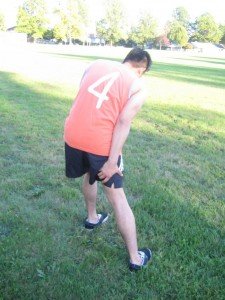Spinal cord compression occurs once a mass applies pressure on the cord. The spinal cord is comprised of nerves that transmit signals back and forth between the brain and the entire body. The mass might be a tumor or fragment of bone. Compression can occur anywhere throughout the spinal cord from the neck up to the lower spine.
What are the indications of spinal cord compression?
The symptoms of spinal cord compression tend to vary based on the severity of the compression and area of the spinal cord that was crushed.
One of the usual symptoms is pain or stiffness in the back or neck. Weakness or numbness in the hands, legs and arms can also develop. It is important to note that cauda equine syndrome can develop if the compression occurs in the lumbar area with the following symptoms:
- Intense pain and weakness in the legs
- Severe numbness in the back part of the legs and inner thighs
- Loss of bladder or bowel control
What are the causes?

Spinal cord compression has various causes. Remember that the compression might occur abruptly in some instances. The compression can occur over time in some cases. The usual causes of spinal cord compression include the following:
- Ruptured disc
- Certain degenerative diseases such as arthritis
- Bleeding disorders teamed with chiropractic manipulation
- Damage to the spinal cord or area around the cord that results to swelling
- Presence of bone spurs that narrows the spinal canal
- Non-cancerous and cancerous tumors on the space close to the spinal cord
Who are at risk?
Any individual can sustain damage or end up with a condition that results to spinal cord compression. There are certain factors that can increase the risk such as the following:
- Poor lifting techniques that increases the risk for back or neck injury
- Osteoarthritis
Management
The treatment for spinal cord compression depends on the cause and severity of the compression. The doctor might recommend limited physical activity or immobilization. The usual treatment measures include the following:
- Anti-inflammatory medications that reduce the pain and swelling
- Physical therapy such as exercises to fortify the leg and abdominal muscles
- Epidural steroid injections to the spinal region
- Alternative measures such as acupressure or acupuncture
- Home remedies such as application of ice packs and heating pads along with over-the-counter pain medications
- Radiation therapy or chemotherapy to shrink a tumor
Preventive measures
It is impossible to prevent spinal cord compression since there are various possible causes. Keeping a healthy weight and performing regular exercise can reduce the added pressure on the back as well as the symptoms of compression. In addition, proper lifting techniques can reduce the risk for injury.
